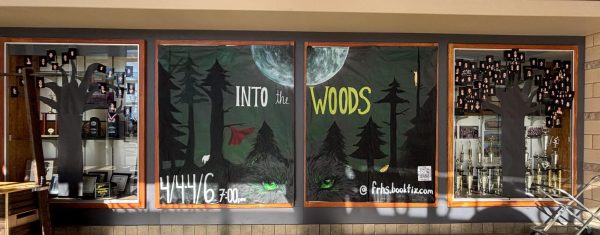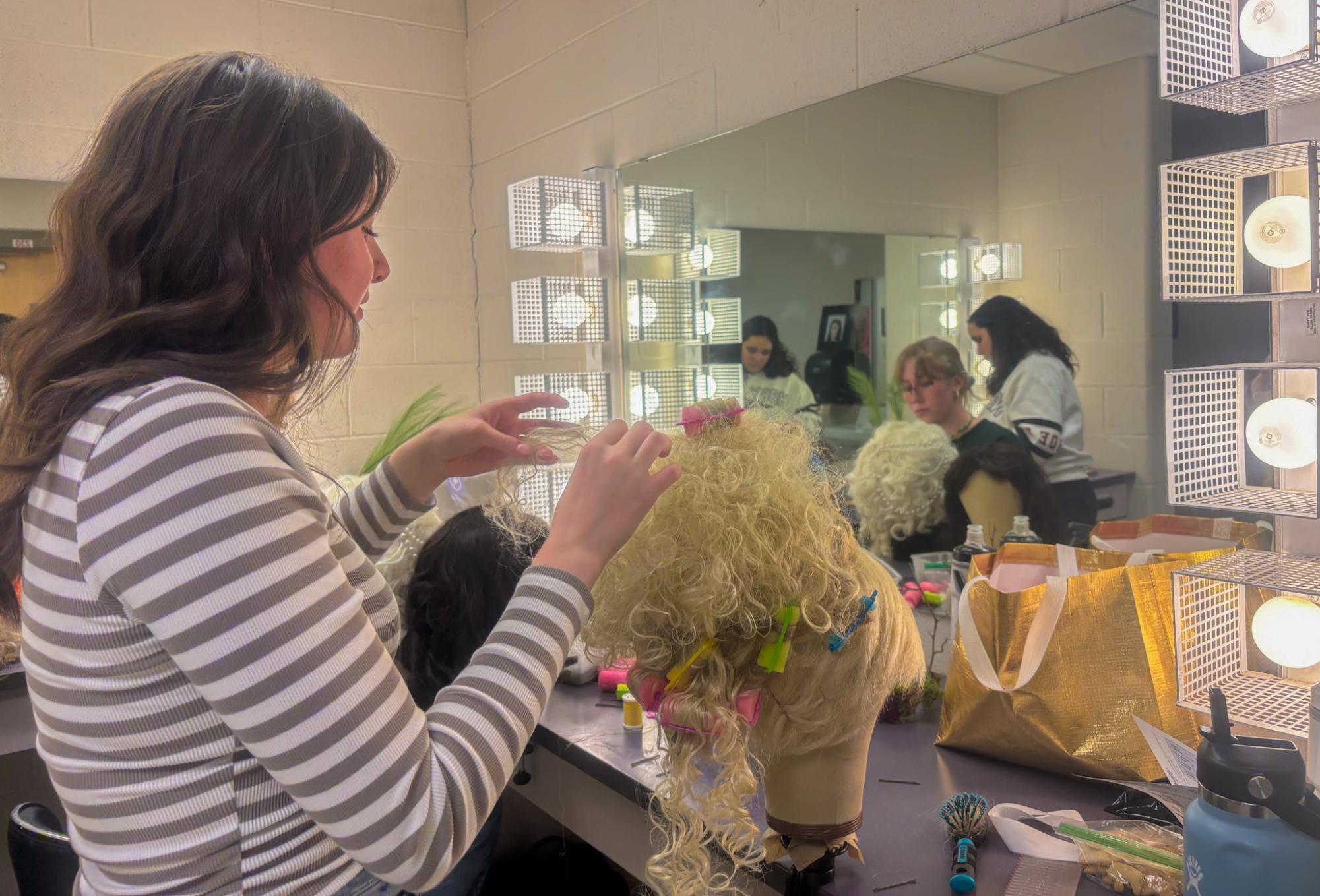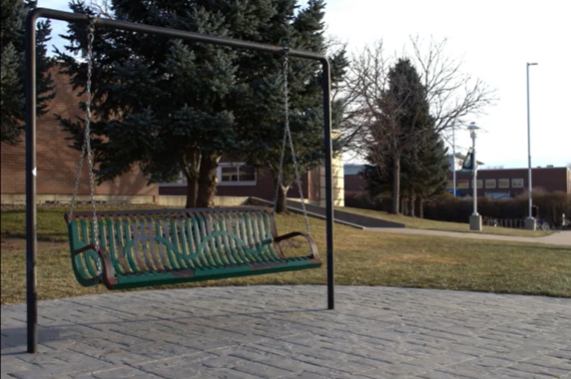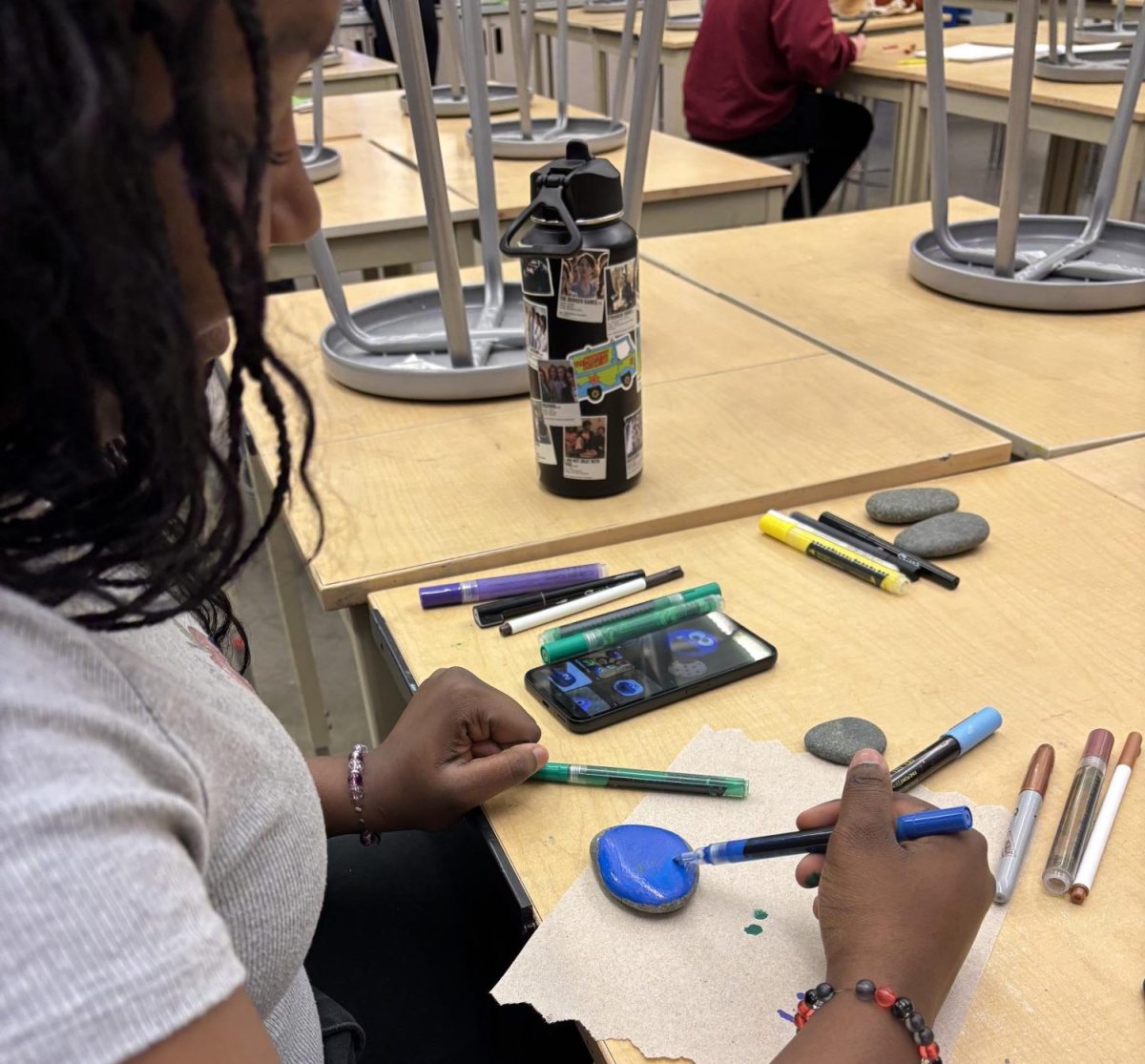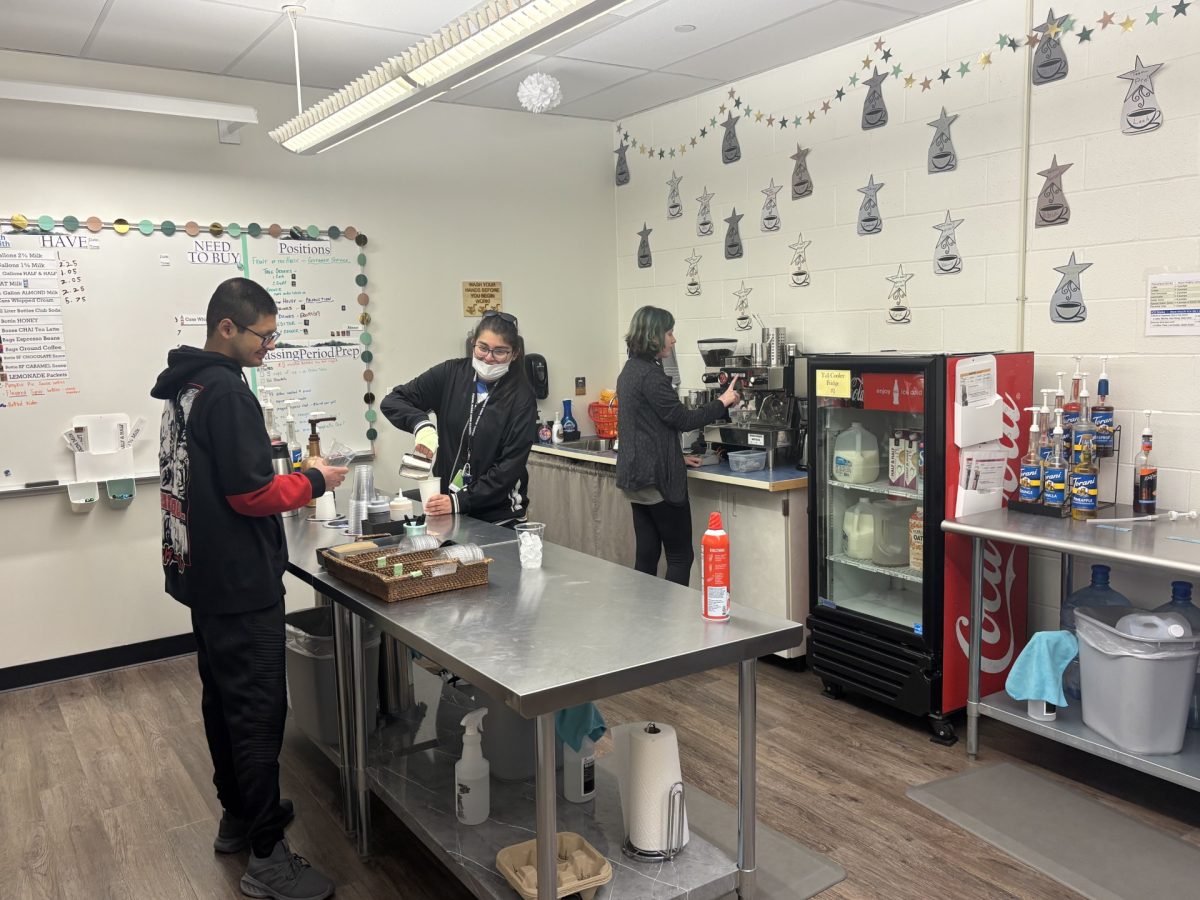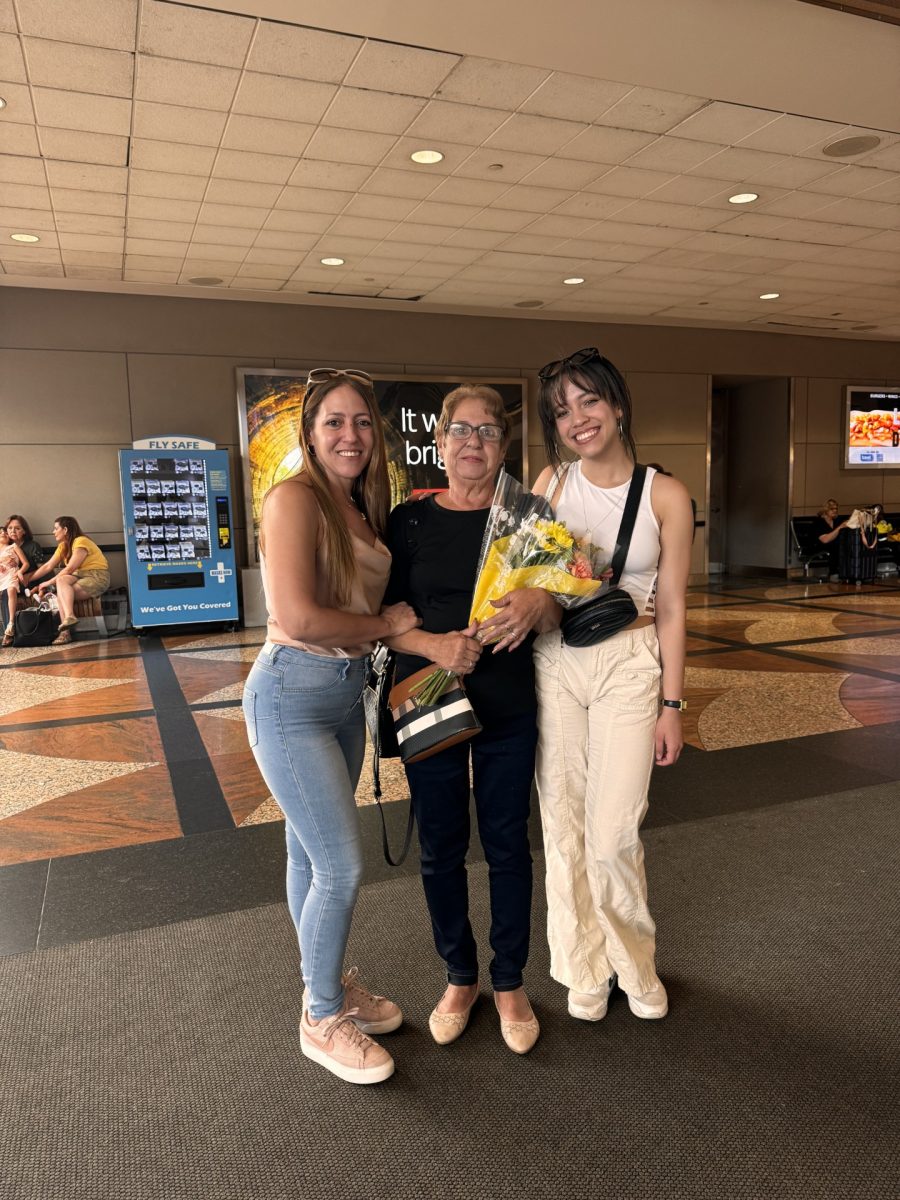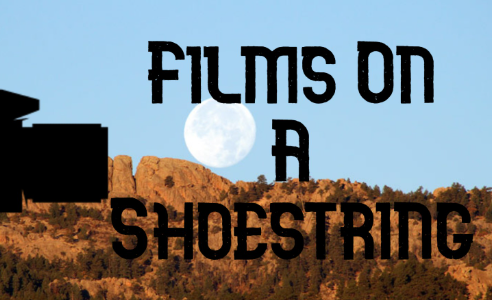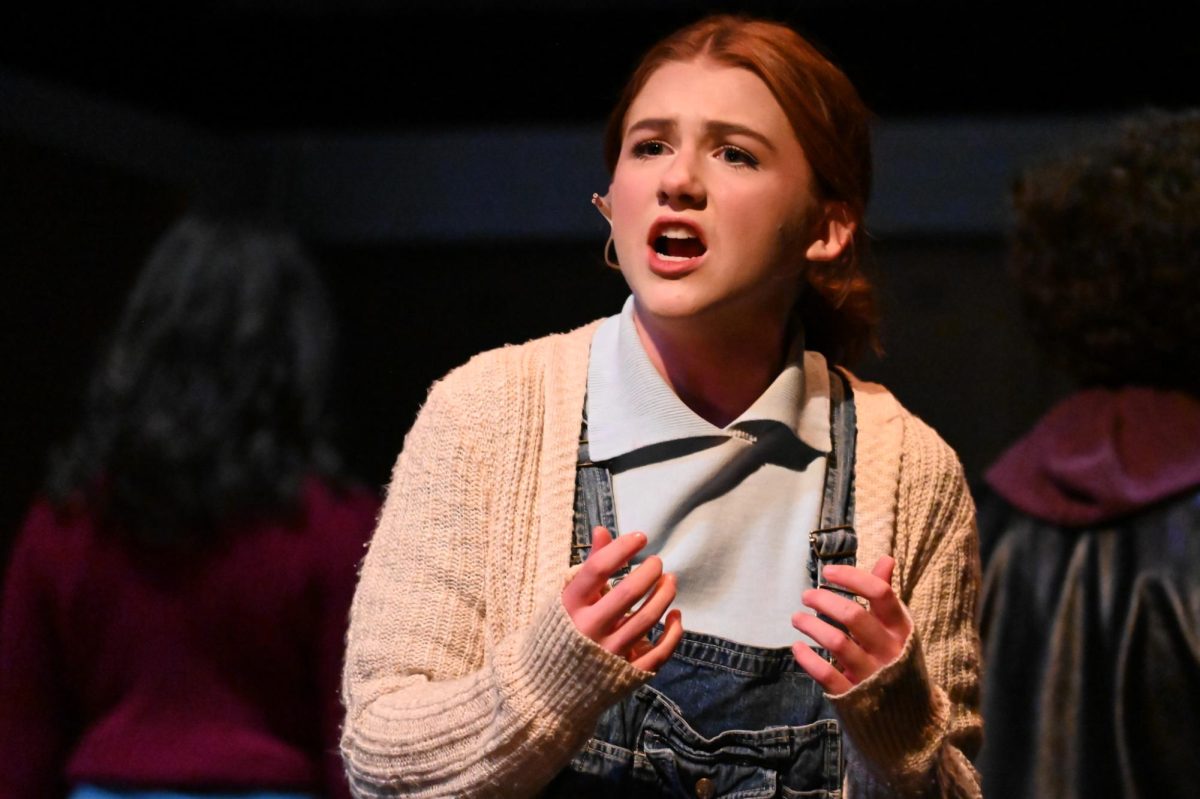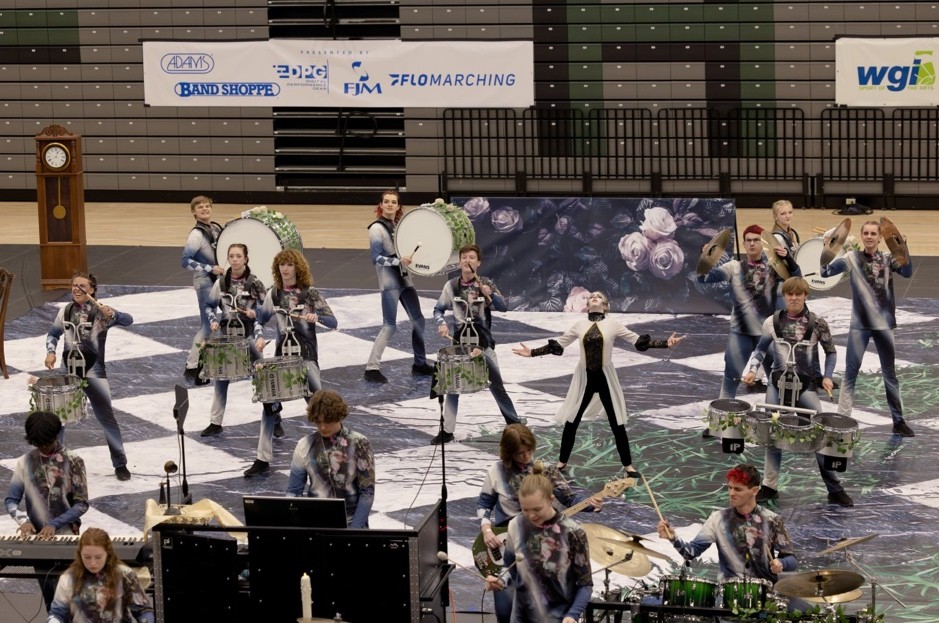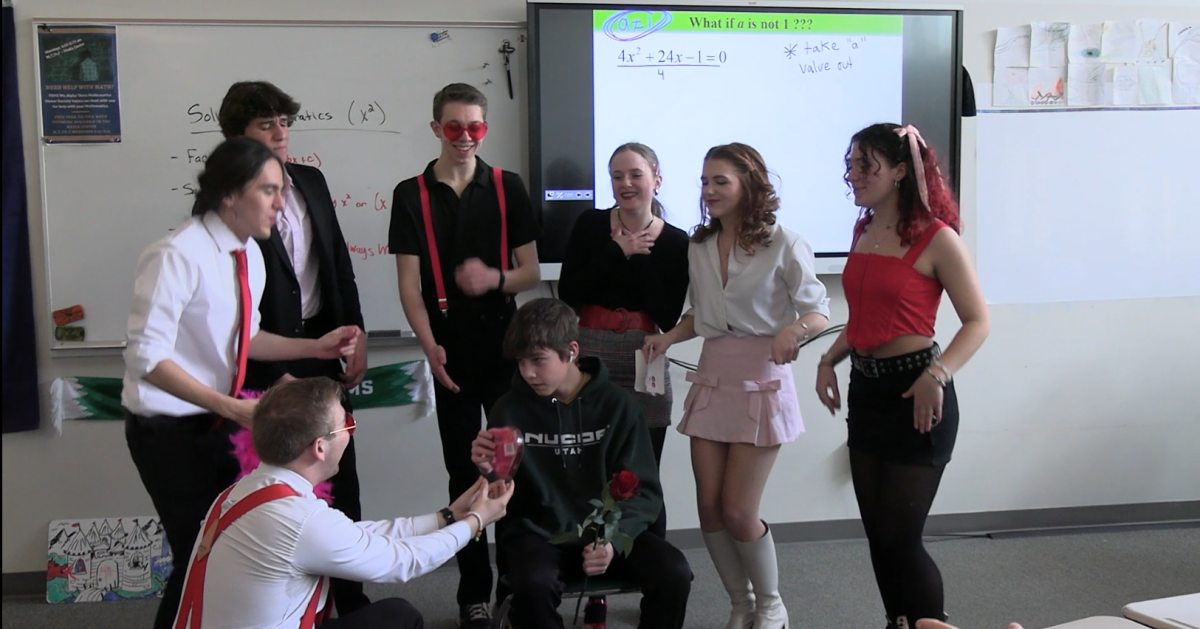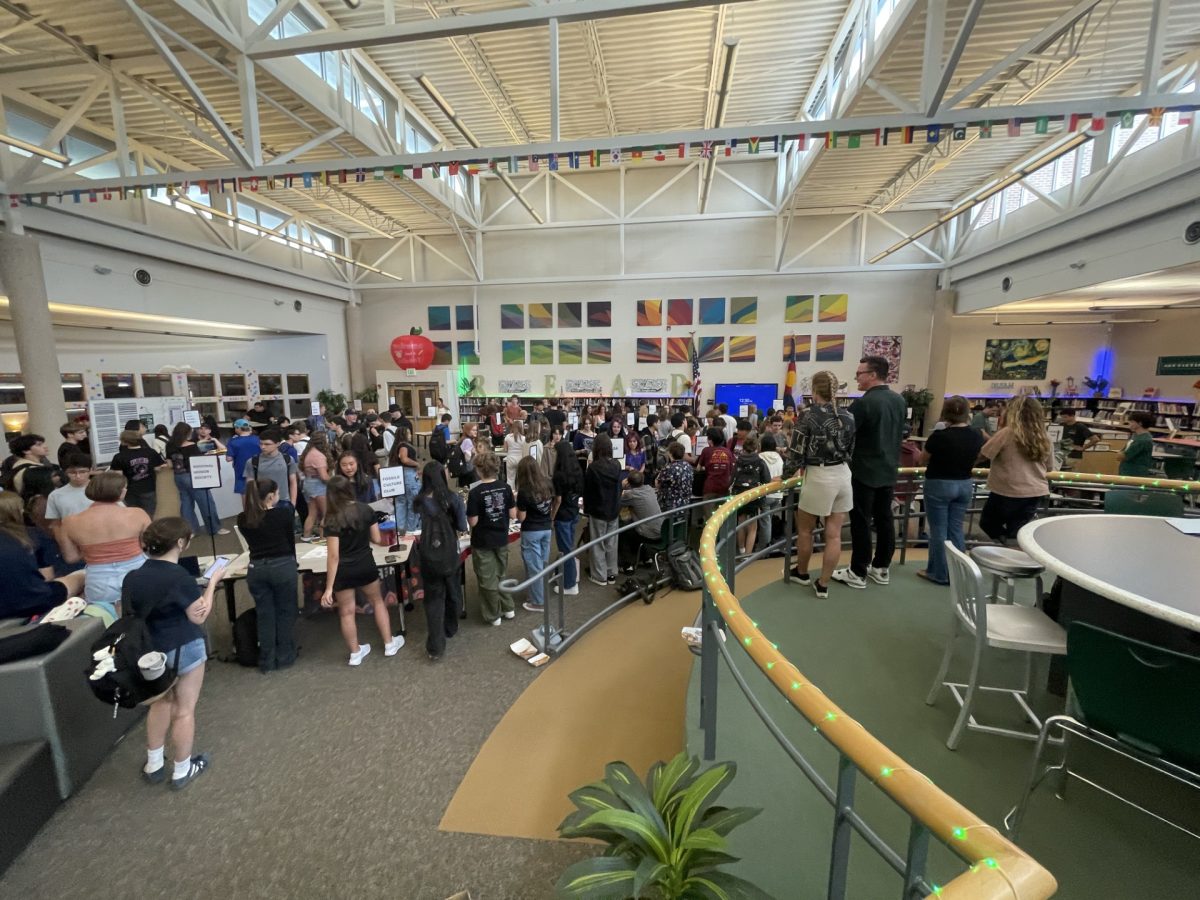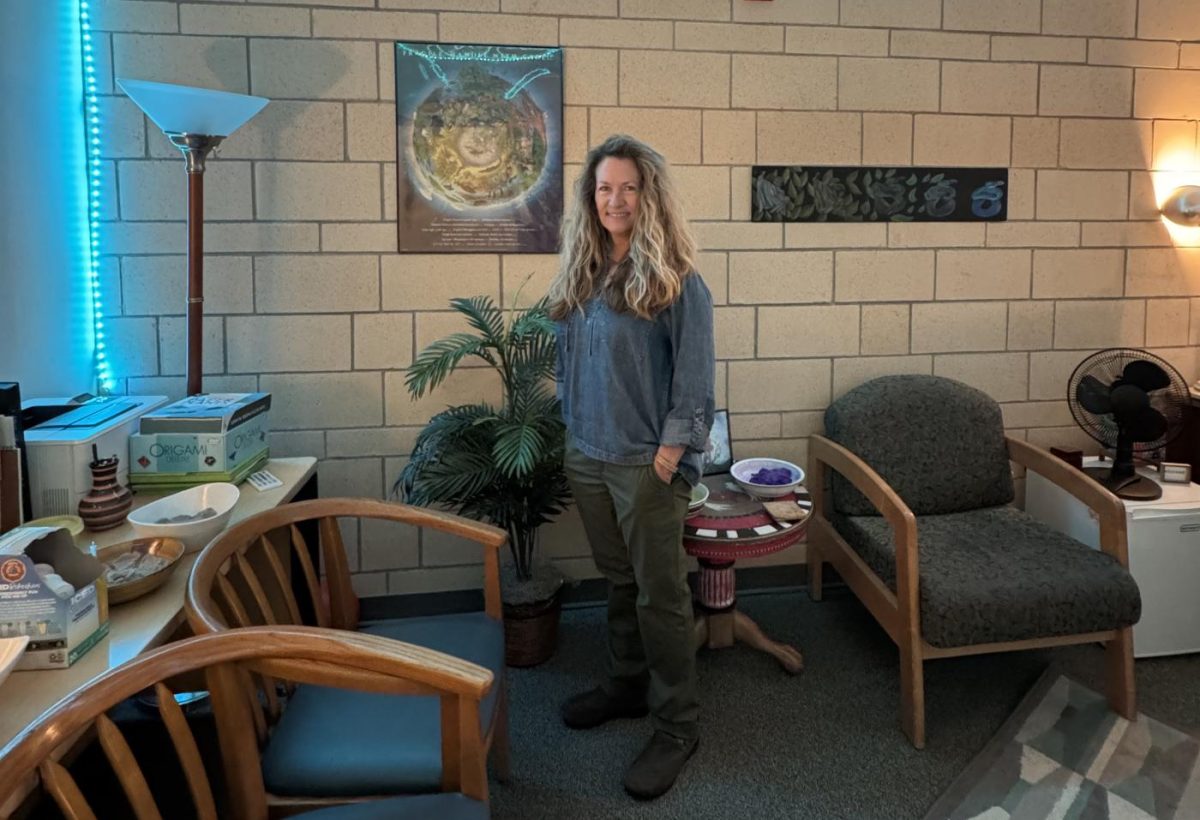Putting on a two-hour show for a rapt audience is something the Fossil Ridge Theatre program does multiple times a year with great success, but a lot of the production process goes unseen. This is all the more true for “Into The Woods”, the crew putting in countless hours after school as well as over the weekend and breaks.
The first crew aspect of “Into The Woods” that had to be completed was designing the set. This set is especially unique because it is entirely student-designed, a Fossil first. Alexa Fritzler, Christian Cote, and Hillary Slezak worked together to design the set with minimal help from John Garner, the technical director for “Into The Woods” and the person who usually designs the set.
“[The process] was super stressful but I had an amazing crew with me of Christian and Hillary and we worked really hard together. It was a lot of trial and error but we got it,” says Fritzler, co-set designer and a co-lead set constructor.
This was a brand new experience for these students but they did not let that stop their ideas from taking shape.
“Our director gave us one word of transformation… which we started with, but as time went on we started losing that idea and started focusing on our biggest thing of monochromatic,” Fritzler says. “We wanted to make our set just black, white, and gray along with making our trees and leaves out of book pages to show it’s about stories in a storybook.”
The eight people on set crew have a tight timeframe since their piece has to be complete before most other crews can do their finishing touches. They work throughout the week to build what they can of the set and, because of scheduling conflicts, they could only start putting together the set on the PAC stage right before Spring Break.
“Usually… on Saturday’s we’d work 9 [a.m.] to 4 [p.m.] and then with Spring Break we would come in from 9 [a.m.] to 1 [p.m.]. They were all voluntary, but a lot of us would show up,” Fritzler says.
Another crew that enhances the set is the lights crew. They illuminate the stage and subtly make the audience feel through color.
“It’s been a lot of manual labor because I’m carrying lights up and down stairs and setting them up and focusing them onto where they should be on the stage. It’s been pretty fun for me because I like hands-on work,” says Romy Tran, a freshman on lights crew.
Another layer of immersion during the show is the sound crew. They balance the actors’ mic sounds and the pit orchestra while applying any sound effects.
“[It’s been] stressful and also it’s a great learning experience to do both the mics and the pit… with the mics you have more effects to add to everything, even the slightest breath you can hear but with an instrument you play a note and that’s it, that’s all you hear,” says Grace Howell, a senoir who has been on sound crew since freshman year.
One particularly challenging aspect to this musical was the puppets, requiring a separate team just to work on them.
“We read through the script and then the next thing we do is figure out exactly what they need to do on stage… then we think about budget and materials,” says Slezak, who is also the puppetry crew lead.
Only needing a few puppets does not stop the work from taking a long time.
“We had to make a cow puppet, a hen that lays a golden egg that’s remote controlled, we had to make birds that can flap and move on stage and a cow cutout too,” Slezak says. “Our [cow] puppet probably took us a month.”
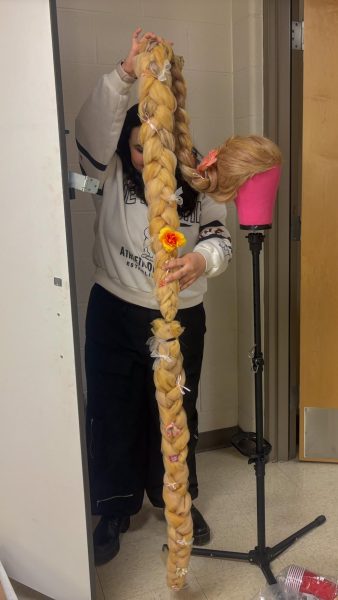
Costumes and hair and makeup are each assigned one or more characters to work on together to create a finished product. A special part of this production is each character has an outfit that pertains to the century their storybook takes place in.
“The amount of wigs that we’re trying to make look like they fit in the storybook setting; making sure they’re big enough that they look a little crazy but not crazy that it looks way out of place,” says Gabrielle Villalpando, co-lead for hair and makeup.
During costumes script read through they highlight any costume mentions, such as a character mentioning a hat and coat. They also start the preliminary process of designing the characters.
“We throw out ideas for colors and costumes and then we vote on [which character] we want,” says Sadie Haack, costumer for Jack, Jack’s mother, and Slezak who puppets a cow in the show. “[I] did a lot of research on what colors poor people could afford…like gold and purple is royalty only.”
Due to the variety of time periods and themes attached to each character, each student did extensive research for their part. Some research included watching shows, reading the script multiple times, talking to Mikayla Assmus, the director, about their vision, and talking to Garner about making their visions practically happen.
“We are working a lot with all the different crews and the actors to see what they like and just see what works the best and looks the best for our show,” says junior Ruby Allen, a member of hair and makeup.
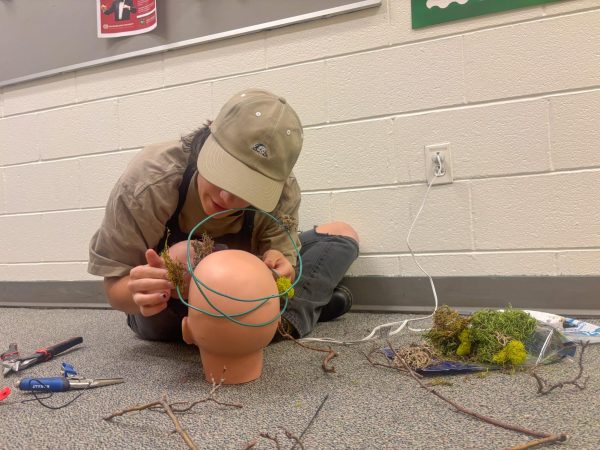
As mentioned, a theme the directors emphasized for “Into The Woods” was transformation. This is especially true in the costume department.
“[Some] characters have the most obvious [transformation], they go from dirt poor to super rich. So for [that character] we wanted to go somewhat tacky because when you get that much money super fast you’re going to do what you want,” Haack explains. “But for [other character] he’s very sentimental, so we figured he wouldn’t change all that much, the quality of his clothes would just go up.”
After Spring Break, the cast can finally be on the stage in full. Costumes are worn and performed in which lets the costume crew see any flaws in their outfit that need to be fixed.
“Once we get closer to show, we are constantly working with the actors making sure that they’re happy with what they look like because hair and makeup is a lot of people’s confidence,” says Gabrielle Villalpando co-lead hair and makeup.
During tech week, every part of the production put it into high gear with students and staff staying until about 10 p.m. every night.
“It’s a constantly evolving process. You have to plan and then you try it out and you’re like “Ah, that didn’t work, we’ll have to try something else’,” Garner says.
Each team reads through the script multiple times, taking notes on anything mentioned pertaining to their section.
“[Props crew] go through the script and anything that’s like ‘knife’ or ‘beans’ we highlight it and make a list, we get it approved by the director, and then we start collecting or making them,” says says Chelsea Pinon, a co-lead on props.
Props include anything that the cast can pick up throughout the show. They can be anything from a knife to something bigger, such as a throne. There are also certain props the crew call “proptumes”, something that could be a prop or a costume such as glasses.
“[Proptumes] are really fun because we get to work really closely with props on [them],” says Haack.
The prop teams work does not stop at making and finding props, they also take on and off props during a performance and hand props to the cast.
“Even during the show there’s so many prop changes and costume changes that go underappreciated… it’s cool to see what goes on behind the scenes,” Pinon says.
A crew team that also helps backstage but is almost entirely invisible to those sitting in the audience are stage managers. They help connect the cast and crew together while also watching over the show during performances.
“We do a lot of work connecting cast and crew and specifically connecting props with what we learn in rehearsals. A script usually comes with a prop list but it might not have [something] listed. We sit in rehearsal to learn about the stuff that wasn’t listed and we give it to our props crew. We also help out with tech crews like set, costumes, lights; we are just a jack of all trades almost,” says Grayden Pustilnik, one of four stage managers for “Into The Woods”.
During a performance, there are typically two stage managers backstage to help with props and communicate with the other crew members throughout the show. There will also be a stage manager up in the lights booth watching over the show for any issues, like a prop being left behind, and calling cues such as lights or sound effects.
“If there’s a major issue [the stage manager] can see the whole stage they’ll be like ‘Oh my gosh this glass bottle just broke on stage we have to clean that up right away’ and they’ll communicate that to our backstage team members and they’ll help sweep it up,” Pulstilnik says.
Tech crew offers a wide variety of experiences. Students typically do not stick with one crew throughout their time on tech and no experience is required.
“I’ve been on a couple different crews… This is my first show on hair and makeup just because I wanted to try some new stuff and just be around a bunch of different groups and people,” says Allen. “It’s been really great, I’ve made a bunch of friends and I’ve gotten to know a lot of people and… I’m really enjoying it.”
Any position does, however, require hard work and a willingness to learn. Being thrown into the deep end provides great learning opportunities but also a chance to deal with strife.
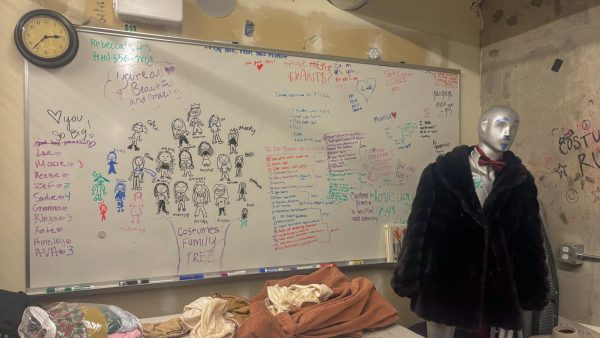
“We don’t know what we’re doing 85% of the time so it is a learn-on-the-go experience. Half of my crew did not know how to use a sewing machine when they walked in here and now I just hemmed a dress and created a panel to make it wider,” Haack says.
At the beginning of the production process, there is a focus on crew bonding to make sure everyone is comfortable with each other.
“[Crew leads] help set schedules and keep morale going in their crew [by] doing fun things and keeping everyone on task,” Garner says.
Any students can sign up to be a part of any tech crew. In order to be a lead, Garner will conduct a brief interview and select those who will be good leaders and have strong skills in their department.
“[The students] go through an interview process where sometimes they’ll show a portfolio or sometimes it’s just different basic questions about what their leadership style would look like,” Garner says.
The “Into The Woods” directors emphasized communication among the students during this production.
“There are 10 different crews and they all do something entirely different, but they have to talk to each other and coordinate what that looks like to get the product [they want],” Garner says.
Costume director Rebecca Spafford, who has been working with the Fossil Ridge Theatre program since 2015, celebrates the crews efforts.
“Collaboration here is ultimately pretty easy. We have a pretty good setup; directors [talk] to leads on each of the crews and then the leads of each crew helps communicate to the rest of the crew members,” Spafford says.
Every member of the tech crew works incredibly hard, not to even mention the other crews such as the marketing and house, the digital design crew making the projections, and the scenic painting crew.
“Come see [‘Into The Woods’], it’s honestly such a cool experience because you get immersed in this world that you don’t even think is possible,” Pinon says.
Get tickets to “Into The Woods” on April 4, 5, and 6 at frhs.booktix.com, students and seniors cost $12 and adults cost $15.
